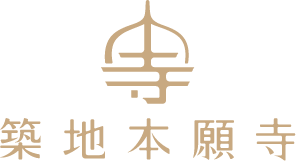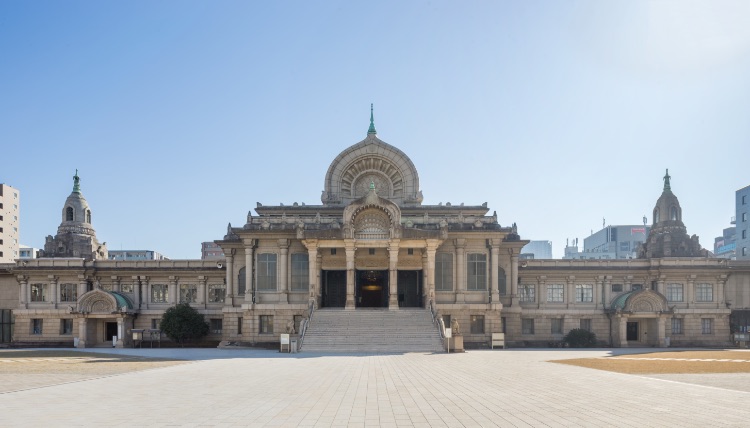

Tsukiji Hongwanji
Tsukiji Hongwanji is a Buddhist temple belonging to the Jodo Shinshu Hongwanji-ha denomination, also known as Shin Buddhism, which was founded by the monk Shinran (1173-1263) and whose head temple is Hongwanji (Nishi Hongwanji) in Kyoto. The temple was first built near Asakusa, but was burnt down in a fire in 1657 and rebuilt at its current location in 1679. At that time, the area where the temple stands now was the sea. Temple followers and others implemented a land reclamation project and rebuilt the temple on the new land. In 1923, the temple was again destroyed by fire caused by the Great Kanto earthquake, and, in 1934, the current Hondo (main worship hall) was rebuilt according to a design by renowned architect Ito Chuta. In 2014, the temple’s main worship hall, gate posts (Main gate, North gate, and South gate), and stone walls were designated as National Important Cultural Properties. “Tsukiji” means “reclaimed land” and signifies the origins of the site on which the temple stands.
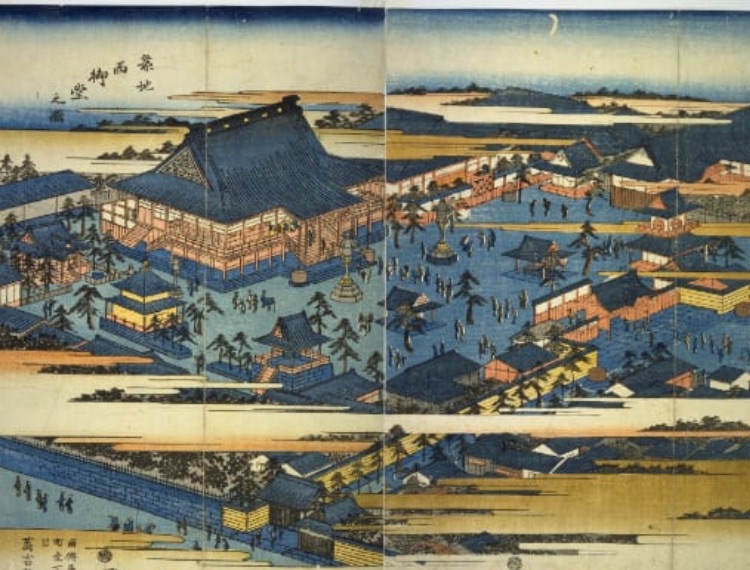

Unique Architectural Features
Tsukiji Hongwanji’s structure is modeled after ancient Buddhist architecture found in India and other Asian countries and was designed by architect Ito Chuta, who was also involved in the joint design of projects such as Heian Jingu Shrine in Kyoto and Meiji Jingu Shrine in Tokyo’s Harajuku. Ito was famous for his love of “yokai,” a term used to describe traditional Japanese monsters, and the temple is decorated with several carvings of creatures. They include winged lions, oxen, horses, shishi lion dogs, elephants, peacocks, monkeys, Chinese phoenixes, and exotic and strange figures called “grotesques”. In addition, depictions of four legendary Chinese animals: Blue Dragon, Red Peacock, White Tiger, and Black Tortoise are hidden inside.
The temple’s roundish roof is modeled after the leaf of the sacred Bodhi tree. A lotus flower is depicted in the center of the facade. A large pipe organ has been installed inside the main worship hall, and stained glass can be seen above the temple door. These, too, are architectural features unique to the temple. Visitors are encouraged to come experience the distinctive temple architecture which only Ito Chuta, who extensively traveled the Silk Road, could create.
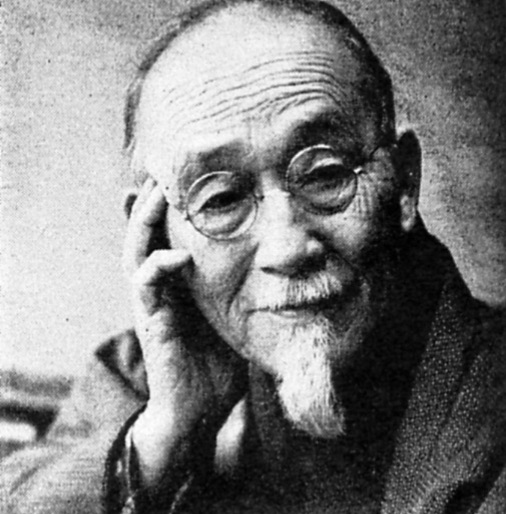
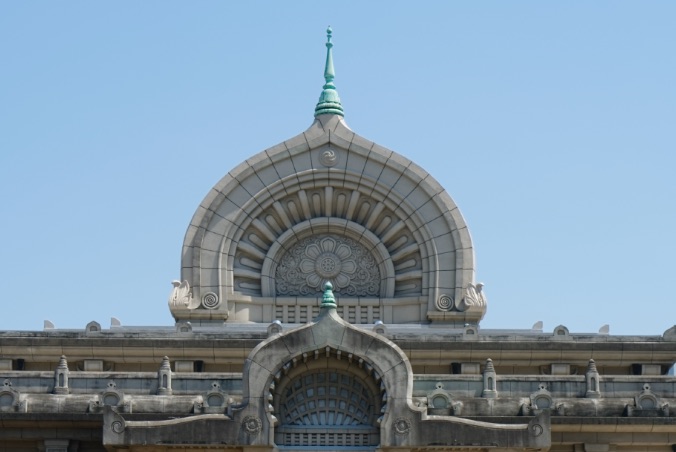
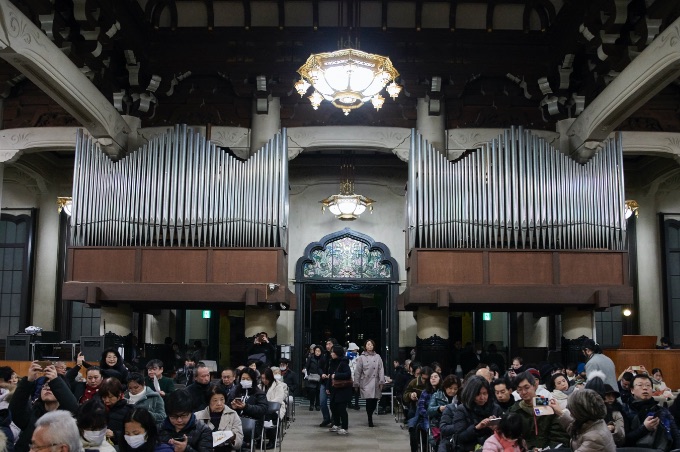
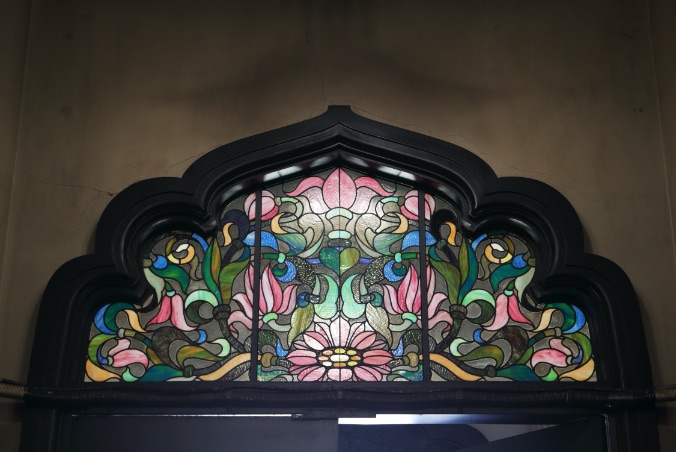
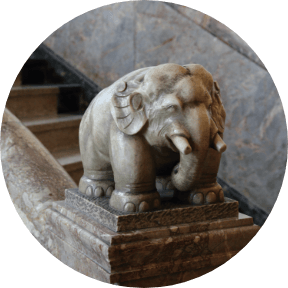
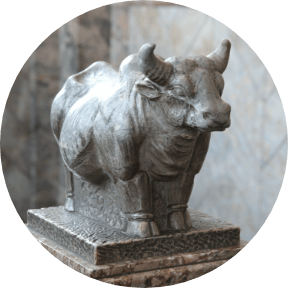
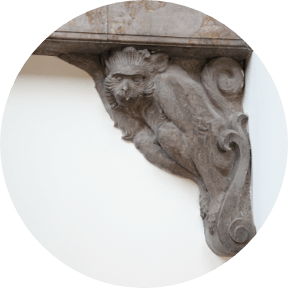
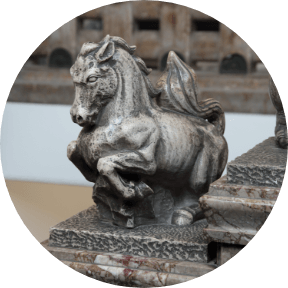
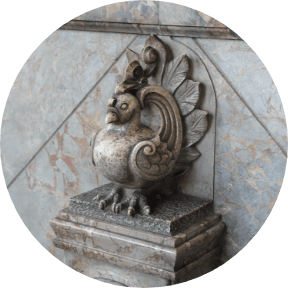
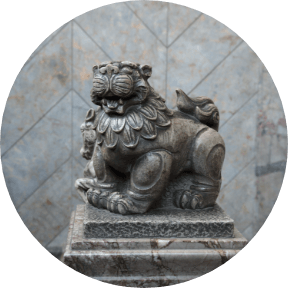
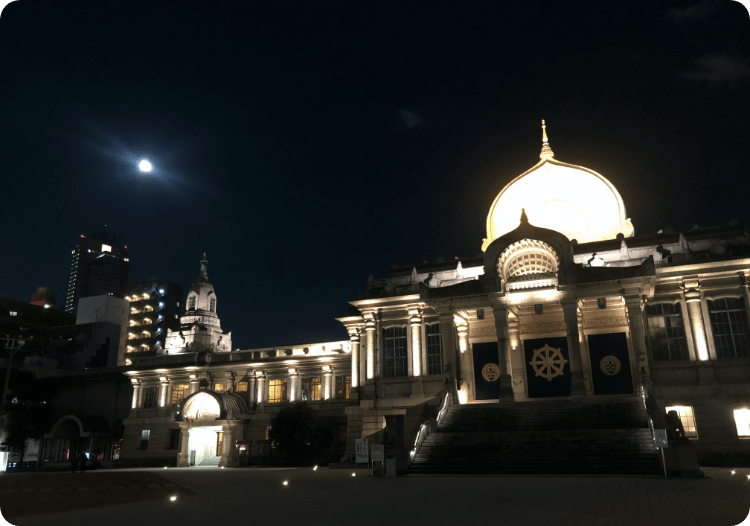
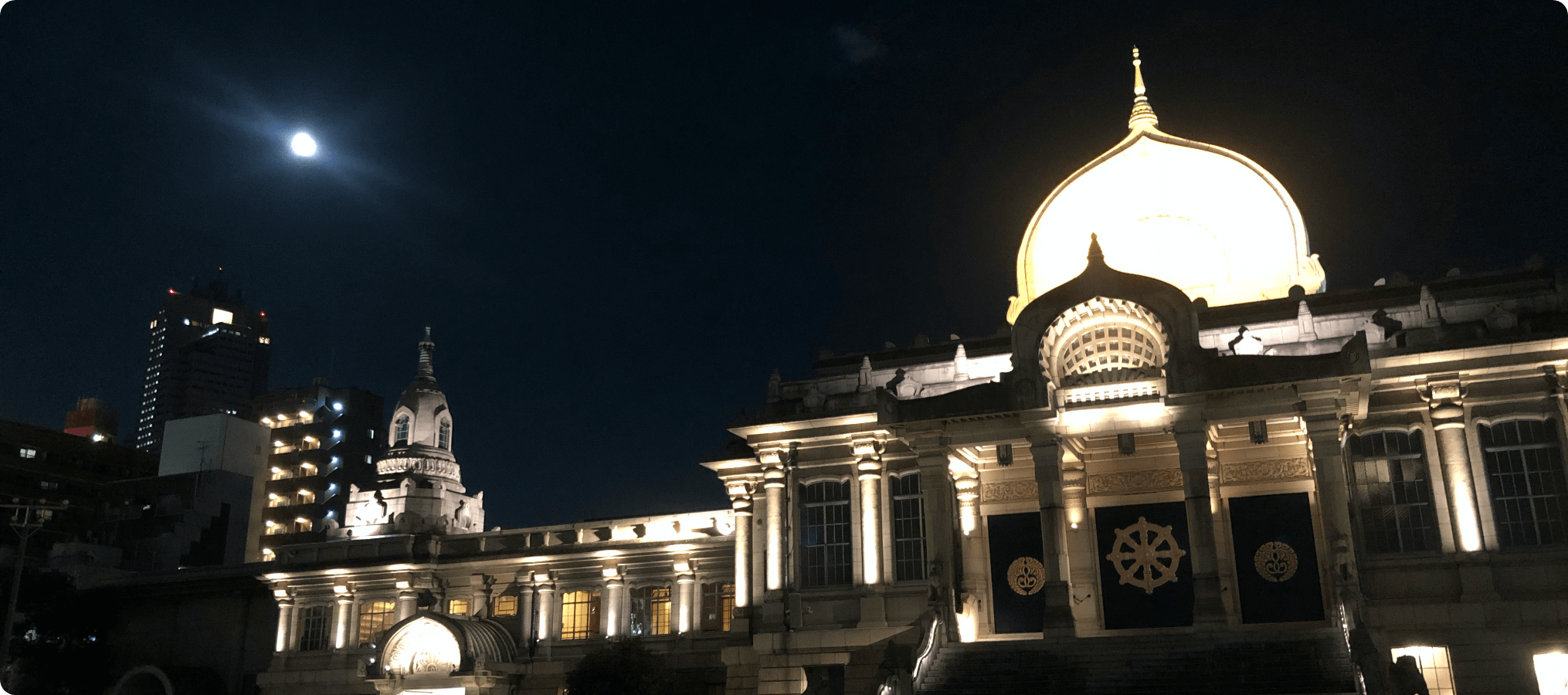
Tsukiji Hongwanji is lit up daily from sunset until around 9:00 p.m. Come experience the
unique atmosphere of the temple and its grounds at night
Come See the Hondo
(Main Worship Hall).
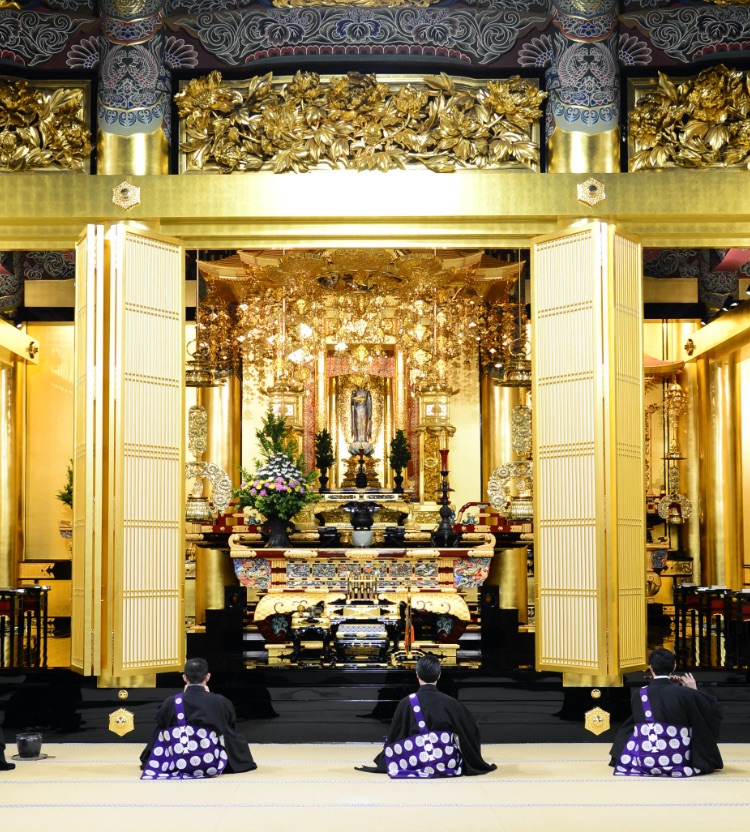
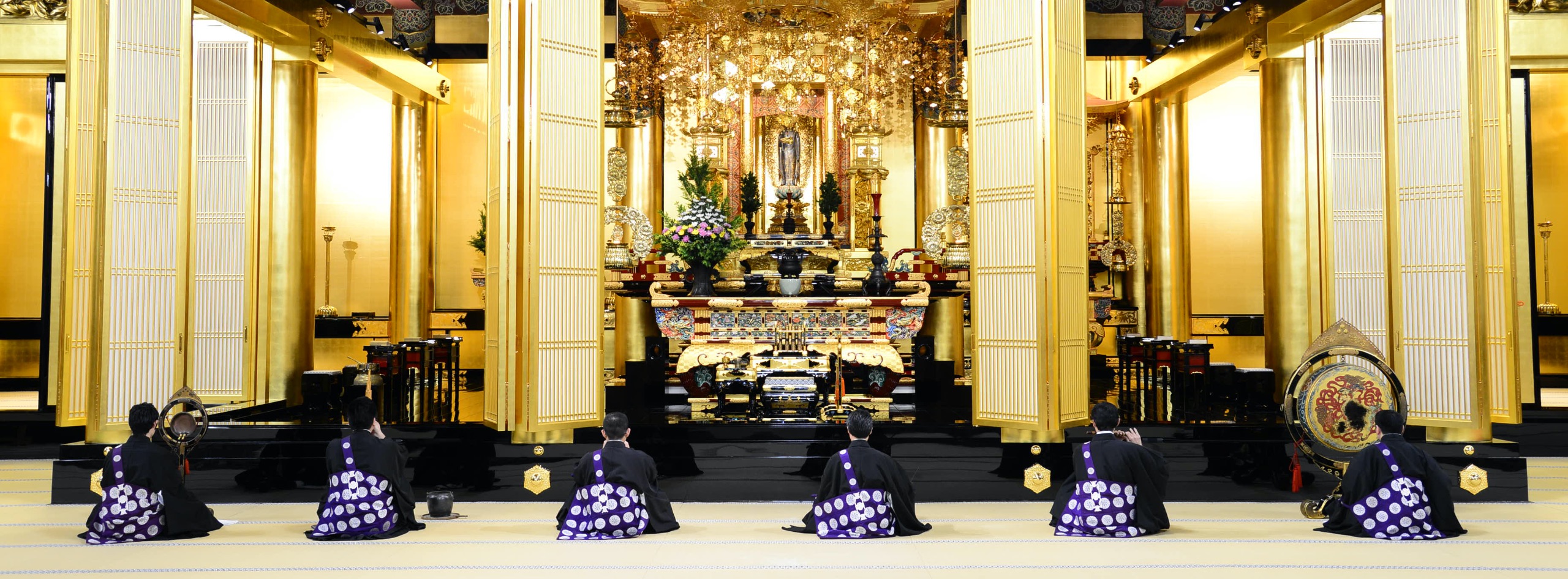
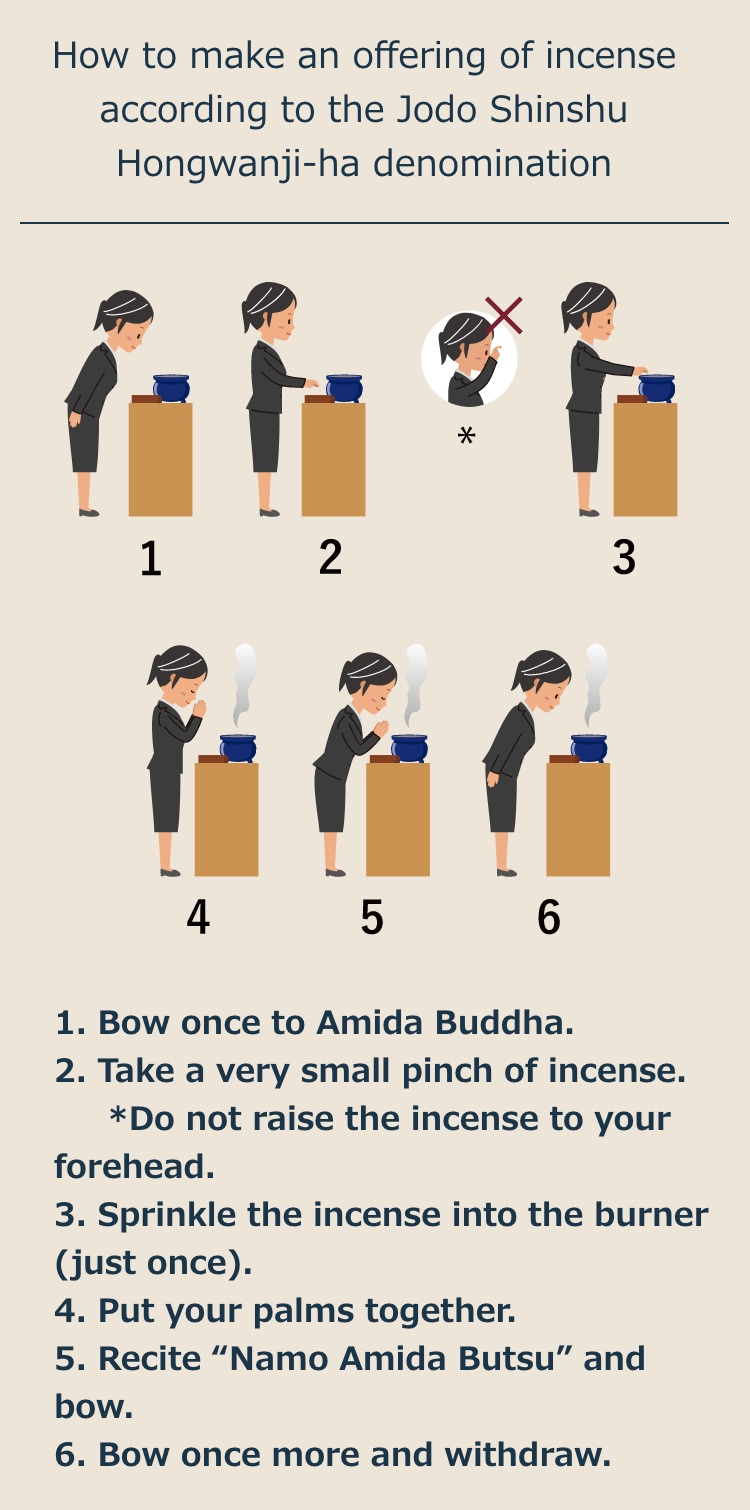
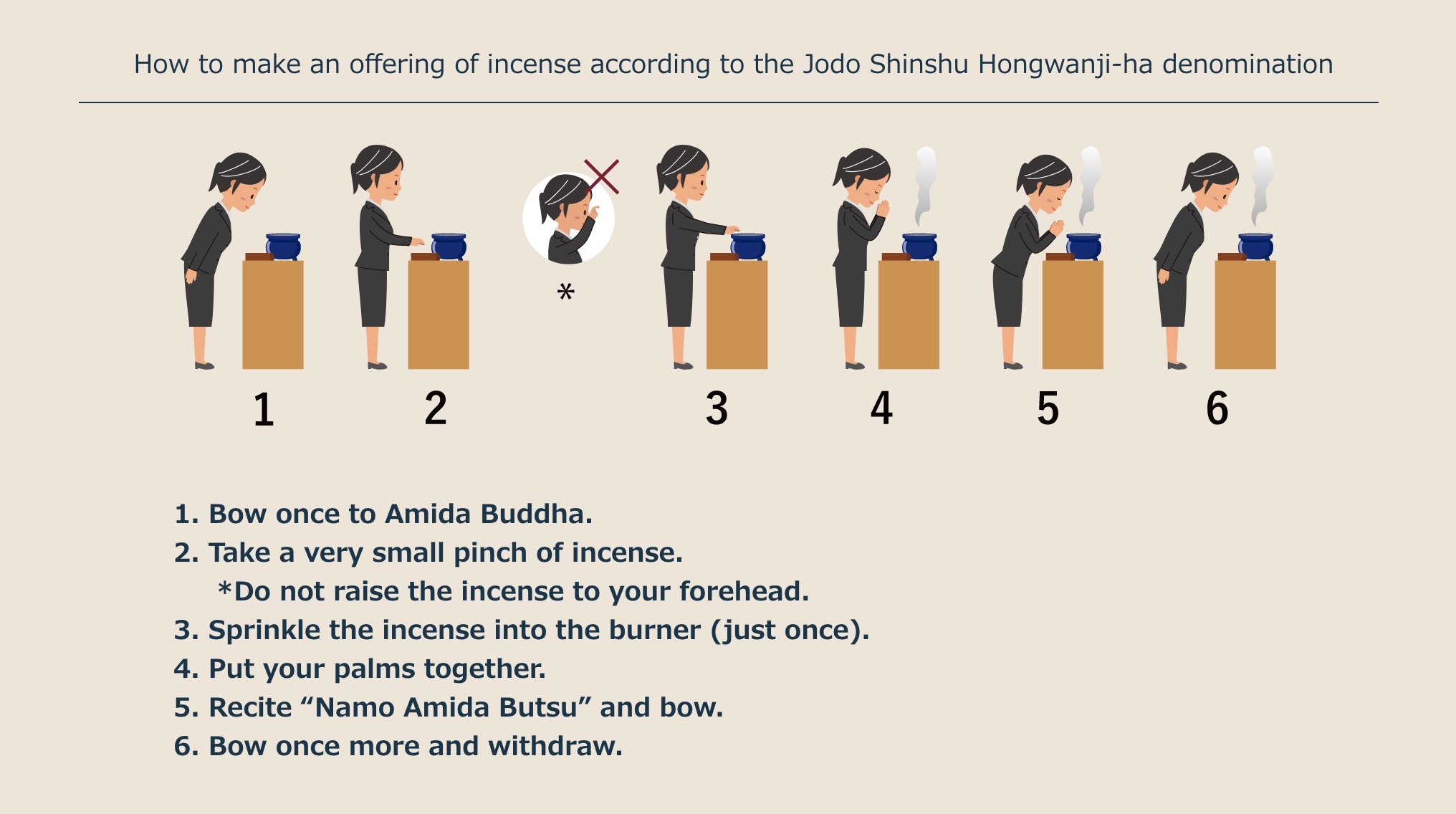
First, stand a step away from the incense burner and bow lightly.
Next, take a very small pinch of incense and sprinkle it into the burner.
Put your palms together, bow forward, and recite “Namo Amida Butsu.”
This recitation means “I entrust myself to Amida Buddha.”
Finally, bow deeply, take a step back, and bow once more lightly.

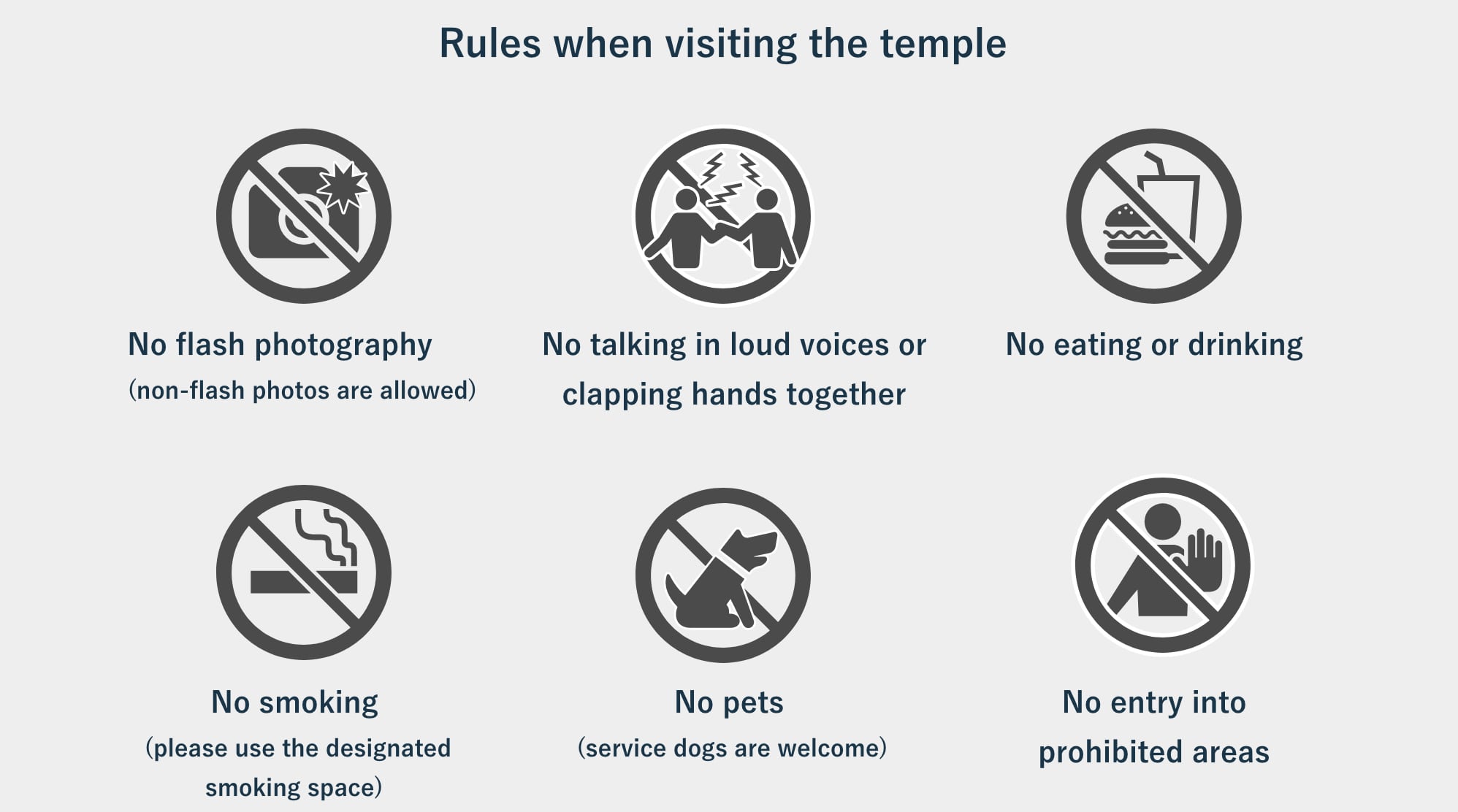
Map of Grounds
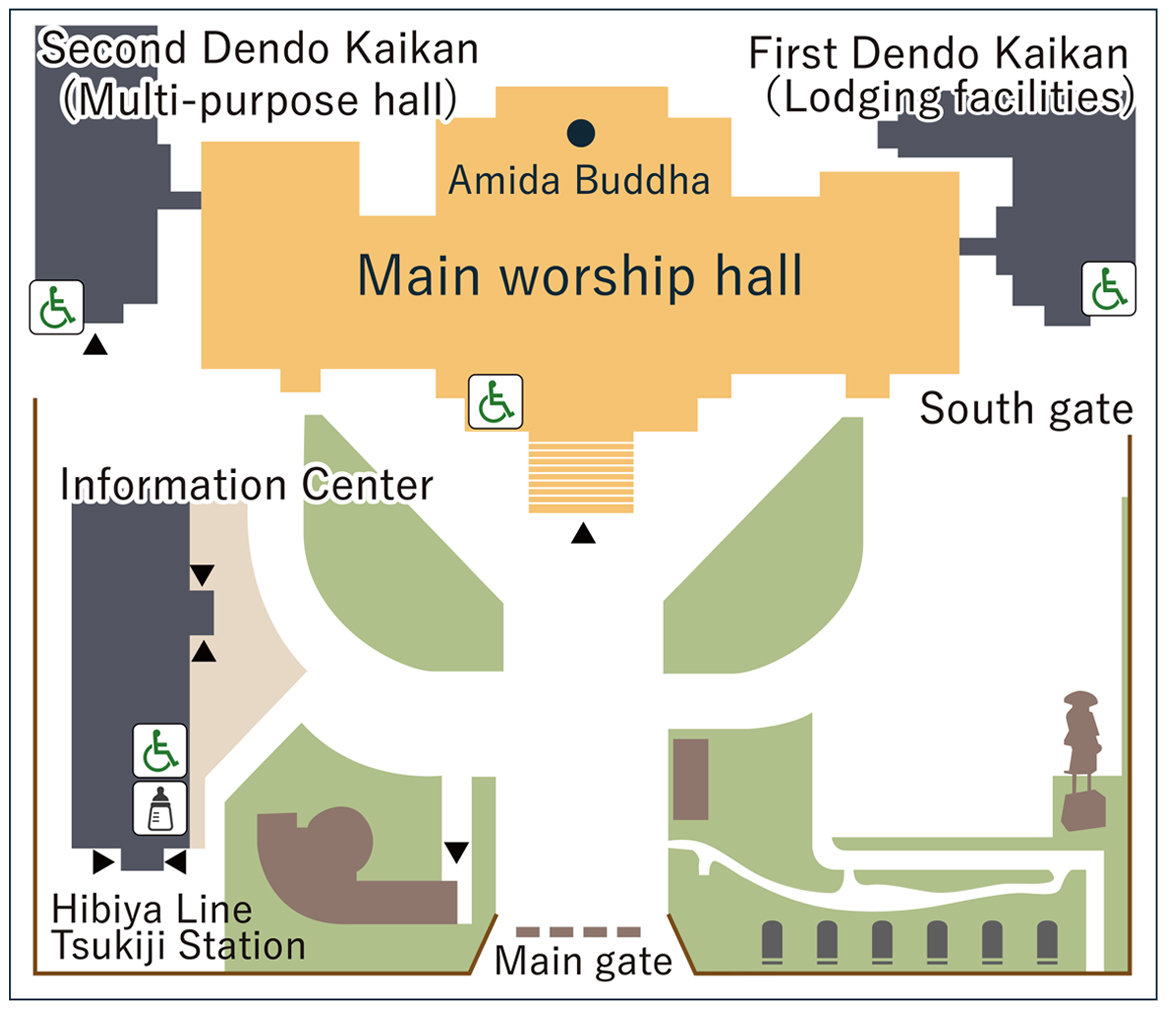
Information Center
Cafe Tsumugi
Official Shop
Information Desk
Multipurpose Room
First Dendo Kaikan
Tea Lounge
Japanese Restaurant Shisui
Souvenir Stand
Accommodations
Conference Rooms
Tsukiji Hongwanji Cafe Tsumugi
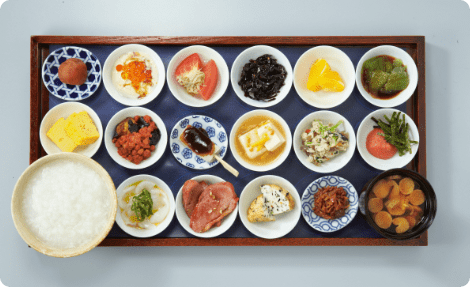
In addition to a popular 18-dish breakfast, Cafe Tsumugi serves Tsukiji Hongwanji’s signature tea blends and desserts. Alcoholic beverages are served at night.
Inside the Information Center
Hours: 8:00 a.m.–9:00 p.m. (open all year round)
Breakfast served from 8:00 a.m. to 10:30 a.m.
Tea Lounge
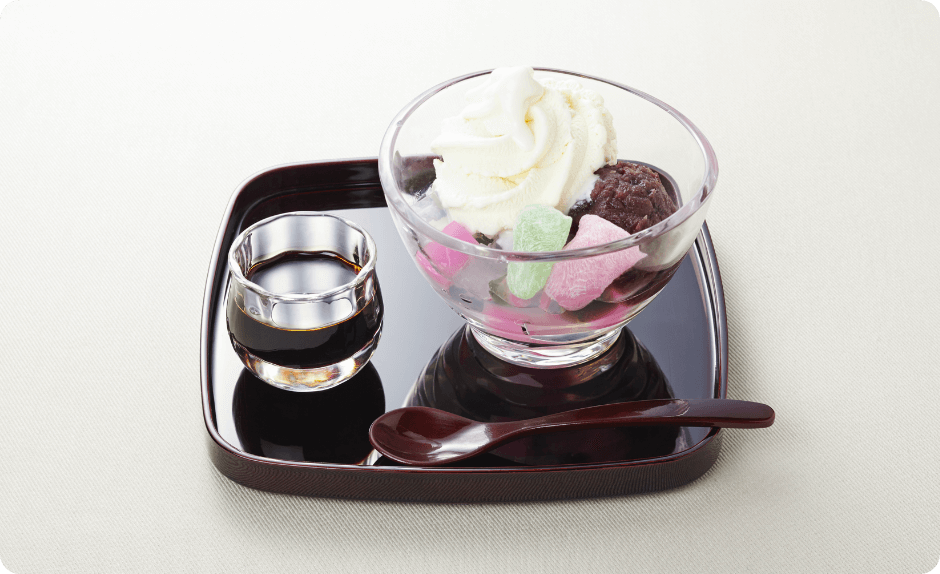
In this brightly-lit lounge adorned with floor-to-ceiling windows, enjoy coffee, black tea, and other drinks; light foods such as toast and sandwiches; and desserts like anmitsu (agar jelly served with anko bean jam and fruit, and topped with syrup and ice cream).
First Dendo Kaikan, 1st floor
Hours: 8:00 a.m.–7:00 p.m.
Japanese Restaurant Shisui
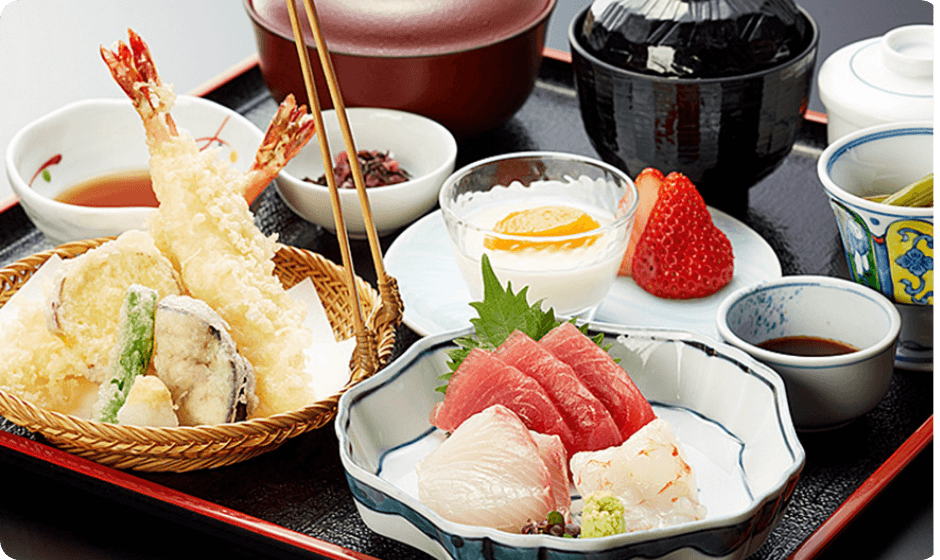
Shisui serves traditional Japanese shojin ryori (vegetarian Buddhist cuisine) whose recipes have been handed down since ancient times, gozen meals made with fresh ingredients stocked straight from the market, and the temple’s famous monzen soba noodles.
First Dendo Kaikan, 1st floor
Hours: 11:30 a.m.–2:00 p.m.
Official Shop
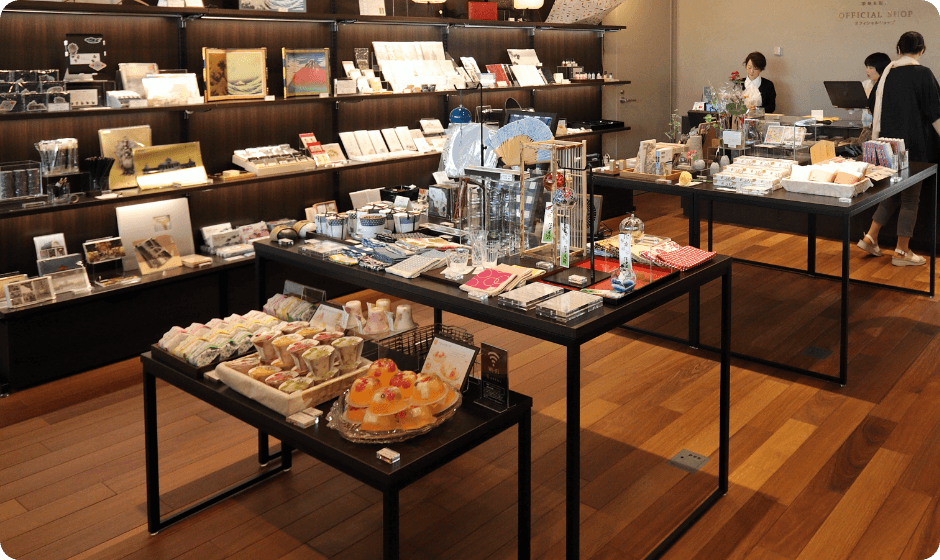
This shop carries Buddhist items and exclusive Tsukiji Hongwanji merchandise such as stationery and knickknacks.
Inside the Information Center
Hours: 9:00 a.m.–5:00 p.m. (open year-round)
First Dendo Kaikan Souvenir Stand
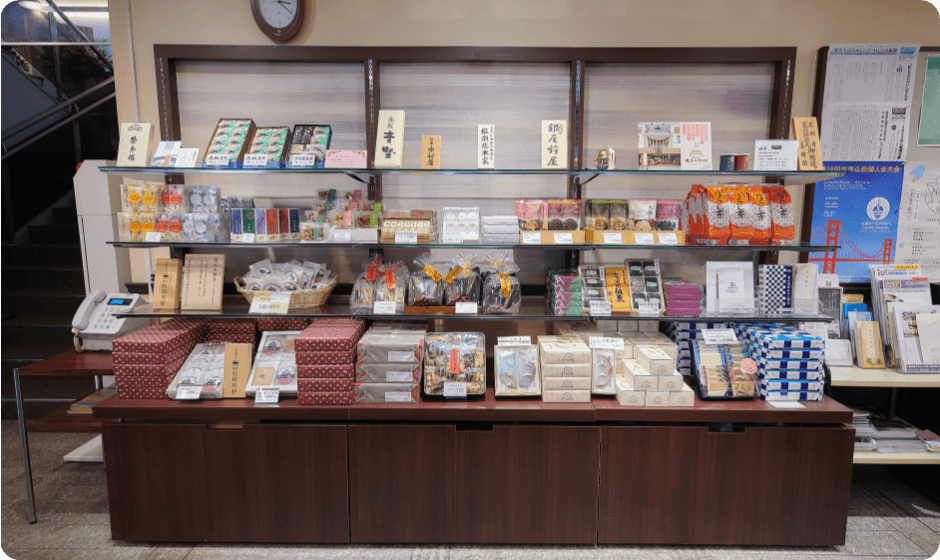
This stand sells Buddhist ritual implements, incense, confections, and more.
First Dendo Kaikan, 1st floor
Hours: 8:00 a.m.–7:00 p.m.
Tsukiji Hongwanji Events
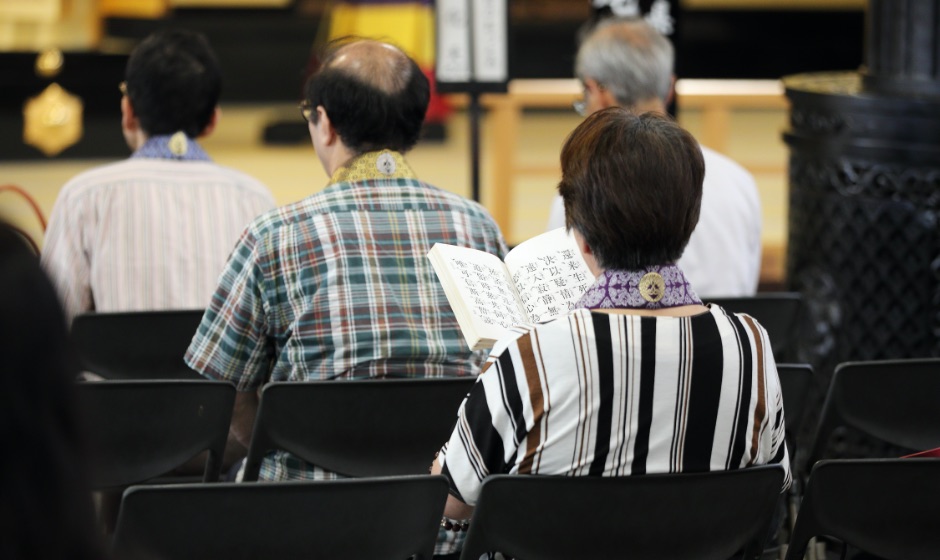
Daily Morning and Evening Services
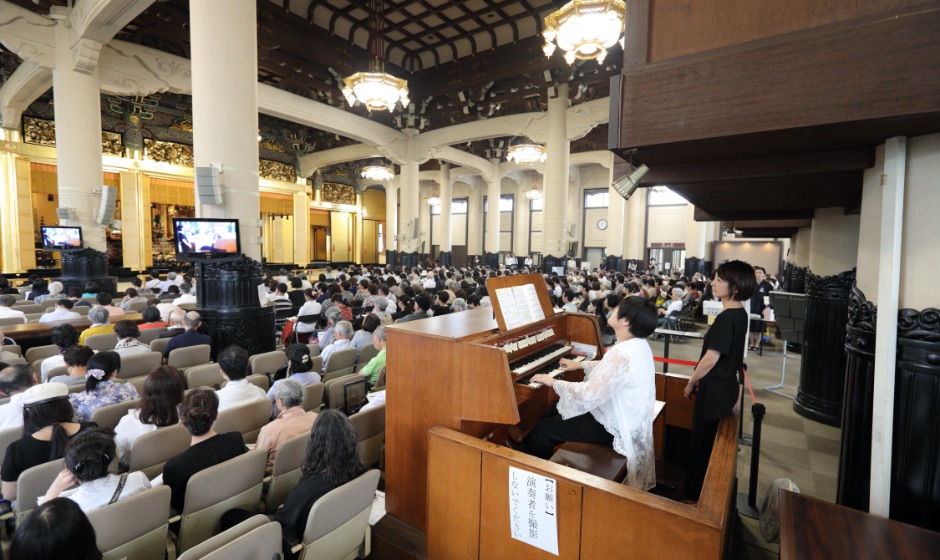
Lunchtime Concert
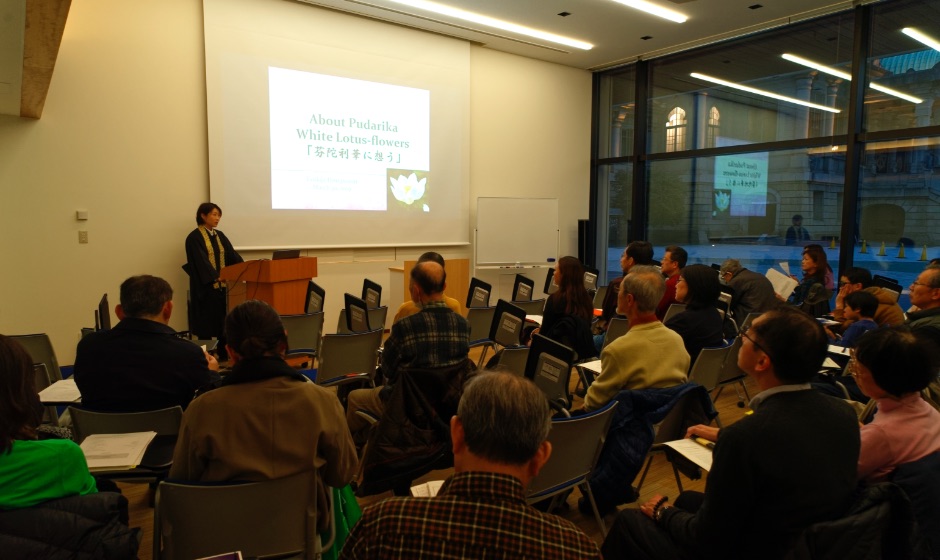
English Dharma Service
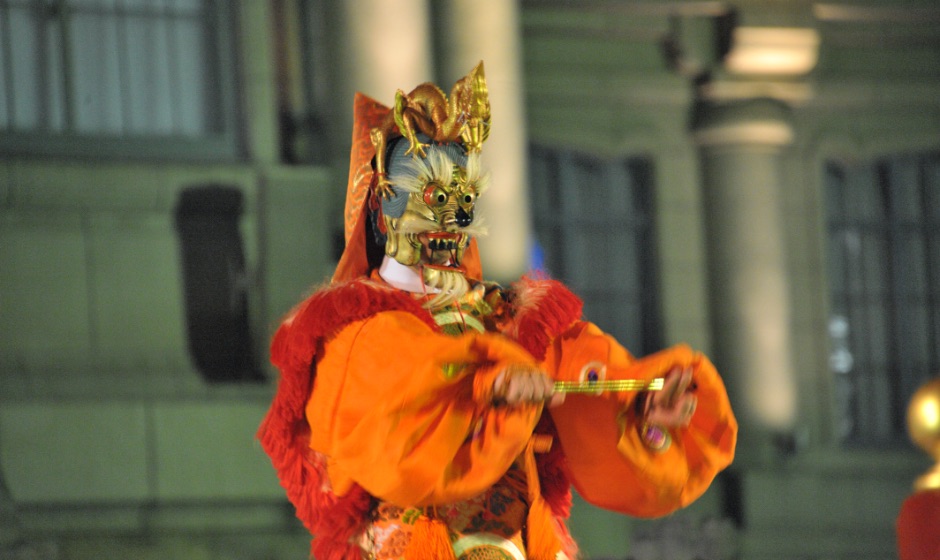
Traditional Gagaku Music Performances
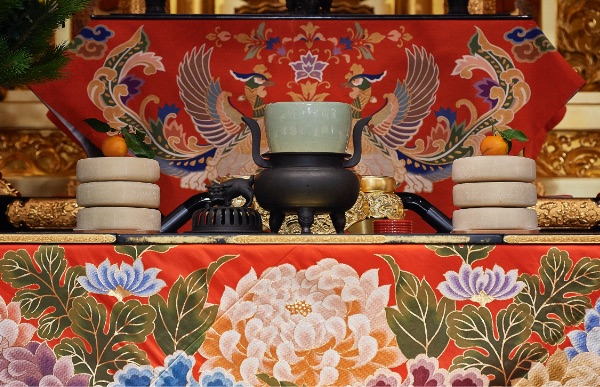
New Year’s Day Service
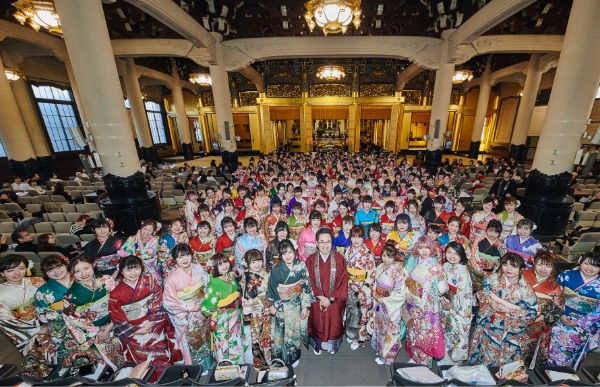
Seijinshiki
(Coming of Age Ceremony)
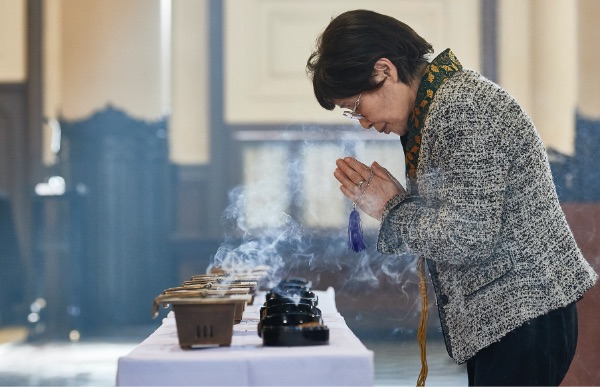
Great East Japan Earthquake Memorial Service
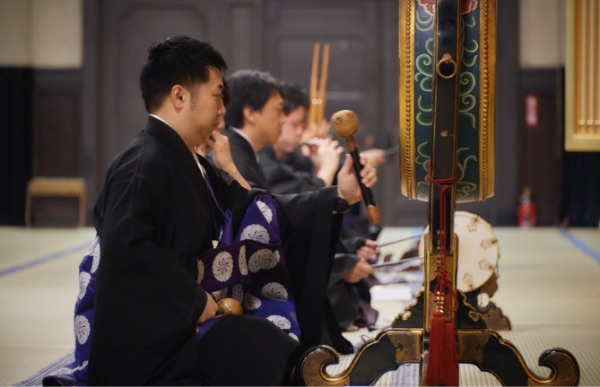
Higan-e
(Equinox Services - Spring and Fall)
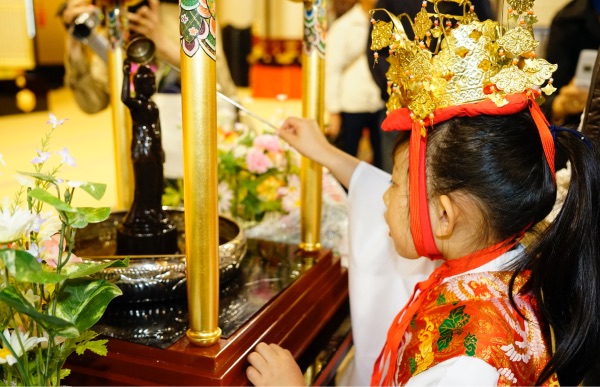
Hana Matsuri
(Buddha’s Birthday)
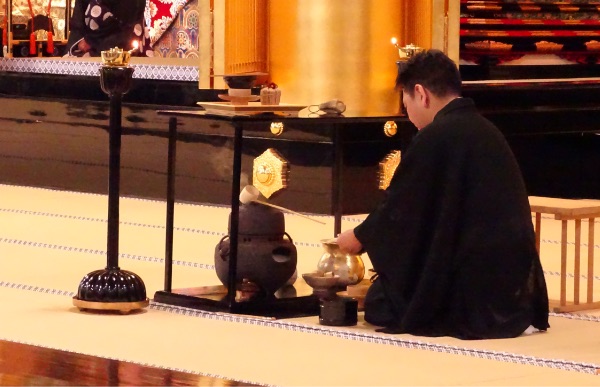
Shuso Gotan-e
(Founder’s Birthday Service)
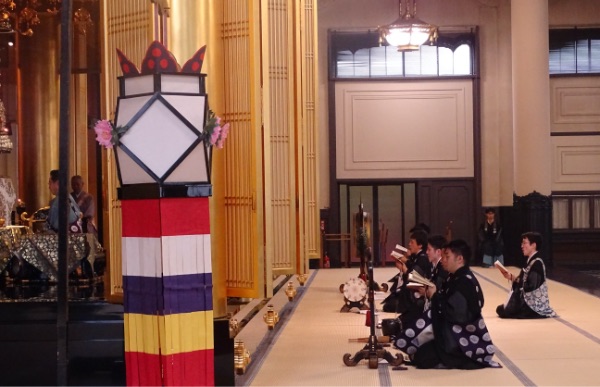
Urabon-e
(Ullambana Service)
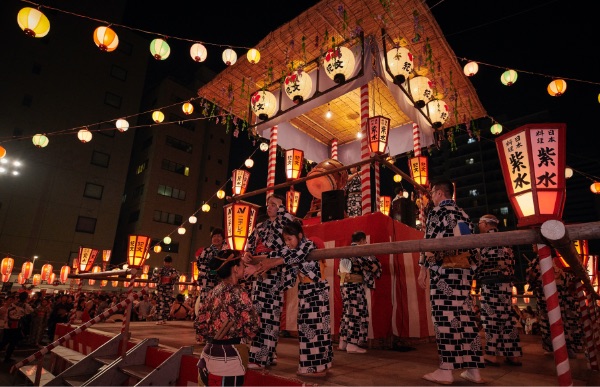
Bon Odori
(Bon Dance Festival)
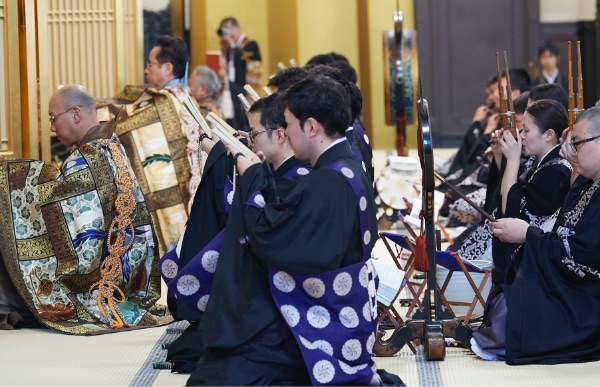
Ho-onko
(Founder’s Memorial)
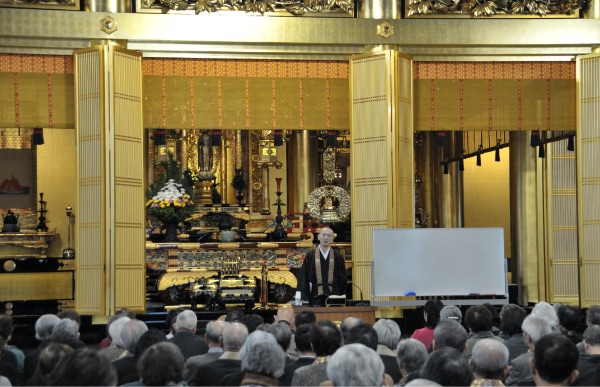
Bodhi Day Sermons
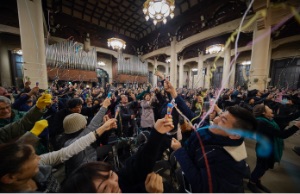
New Year’s Eve Service
Jodo Shinshu
Hongwanji-ha
Tsukiji Hongwanji
3-15-1 Tsukiji, Chuo-ku, Tokyo 104-0045e-mail:koho@tsukijihongwanji.jp
Main worship hall general opening hours
6:00am to 4:00pm(the main door will be closed after the evening service)
Temple ground opening hours
6:00 a.m.–9:00 p.m.
Entry free
Access by subway





